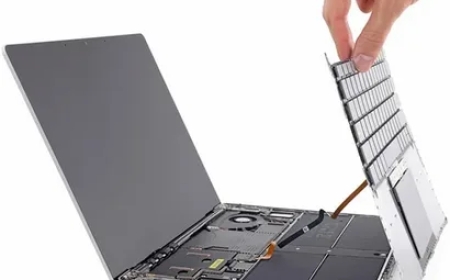Tech Time Travel: Tracing the History and Future of Displays
Take a journey through the evolution of display technology, from its early days to the future of cutting-edge innovations in screens and interfaces.

In the realm of technological advancements, the evolution of display technology stands out as a significant milestone. From the humble beginnings of cathode ray tubes to the advanced interactive flat panel displays of today, the journey of display technology is a fascinating chronicle of innovation, creativity, and the relentless pursuit of perfection. This article delves into the history of display technology, its evolution over the decades, and the promising future that lies ahead.
The Dawn of Display Technology
The story of display technology begins in the early 20th century with the invention of the cathode ray tube (CRT). Developed by Karl Ferdinand Braun in 1897, the CRT became the foundation for the first generation of display devices. Initially used in oscilloscopes and radar screens, CRT technology soon found its way into television sets and computer monitors. These early displays were bulky, heavy, and consumed a significant amount of power. Despite their limitations, CRTs were revolutionary at the time, paving the way for more sophisticated display technologies.
The Rise of Liquid Crystal Displays (LCDs)
The next major breakthrough in display technology came with the development of liquid crystal displays (LCDs) in the 1960s. Unlike CRTs, LCDs were flat, lightweight, and energy-efficient. The introduction of LCD technology marked a significant shift in the design and functionality of display devices. Initially used in calculators and digital watches, LCDs soon became the standard for computer monitors and television screens.
The 1990s and early 2000s saw rapid advancements in LCD technology, leading to the creation of high-definition displays with improved colour accuracy, contrast ratios, and response times. The interactive flat panel became a notable innovation during this period, revolutionising how people interacted with digital content. Interactive flat panels combined touch-screen capabilities with high-resolution displays, making them ideal for educational, corporate, and entertainment applications.
The Advent of Plasma Displays
In the late 1990s, plasma display technology emerged as a competitor to LCDs. Plasma displays offered superior colour reproduction, wider viewing angles, and faster response times. They quickly gained popularity for large-screen televisions and digital signage. However, plasma displays were not without their drawbacks. They were heavier, consumed more power, and were prone to screen burn-in. Despite these issues, plasma technology played a crucial role in the evolution of display technology, pushing the boundaries of what was possible in terms of screen size and image quality.
The Era of Light-Emitting Diodes (LEDs)
The early 2000s witnessed the rise of light-emitting diode (LED) technology. LEDs offer numerous advantages over both LCDs and plasma displays, including higher energy efficiency, longer lifespan, and improved brightness levels. LED technology enabled the development of ultra-thin displays with superior image quality, making them the preferred choice for television sets, computer monitors, and mobile devices.
The introduction of organic light-emitting diodes (OLEDs) further revolutionised display technology. OLED displays provided even better colour accuracy, contrast ratios, and response times compared to traditional LEDs. Additionally, OLEDs allowed for the creation of flexible and curved displays, opening up new possibilities for innovative design and form factors.
The Revolution of Interactive Flat Panels
As display technology continued to advance, the interactive flat panel display became a game-changer in various industries. These displays combined the benefits of LED and OLED technology with touch-screen capabilities, enabling users to interact with digital content in new and engaging ways. Interactive flat panels became essential tools in classrooms, boardrooms, and conference centres, facilitating collaboration and enhancing presentations.
The interactive flat panel display has also found applications in the retail and hospitality sectors, where they are used for digital signage, interactive kiosks, and customer engagement. The ability to interact with digital content through touch, gesture, and even voice commands has transformed the way people communicate and access information.
The Future of Display Technology
Looking ahead, the future of display technology promises even more exciting advancements. One of the most anticipated developments is the widespread adoption of micro-LED technology. Micro-LEDs offer all the benefits of traditional LEDs but with even higher brightness levels, better energy efficiency, and longer lifespans. Micro-LED displays have the potential to deliver unparalleled image quality and could become the standard for high-end televisions, monitors, and mobile devices.
Another promising innovation is the development of quantum dot technology. Quantum dots are tiny semiconductor particles that emit light when exposed to electrical or optical energy. They can be used to enhance the colour accuracy and brightness of displays, making them ideal for applications where visual quality is paramount. Quantum dot displays are already being used in some high-end televisions and monitors, and their adoption is expected to grow in the coming years.
Augmented Reality (AR) and Virtual Reality (VR)
Augmented reality (AR) and virtual reality (VR) are set to redefine the way we experience digital content. AR and VR headsets rely on advanced display technologies to create immersive and interactive environments. The development of lightweight, high-resolution, and low-latency displays is critical for the success of AR and VR applications. Companies are investing heavily in research and development to create displays that can deliver seamless and realistic experiences, blurring the line between the physical and digital worlds.
The Integration of Artificial Intelligence (AI)
Artificial intelligence (AI) is also poised to play a significant role in the future of display technology. AI-powered displays can analyse user behaviour and preferences to deliver personalized content and enhance user experiences. For example, AI algorithms can optimize display settings based on the type of content being viewed, whether its a movie, video game, or text document. Additionally, AI can enable advanced features such as voice recognition, gesture control, and real-time translation, further enhancing the functionality of interactive flat panel displays.
The Environmental Impact
As display technology continues to evolve, there is a growing focus on sustainability and environmental impact. Manufacturers are exploring ways to reduce the energy consumption and carbon footprint of displays. The development of energy-efficient technologies such as micro-LEDs and quantum dots is a step in the right direction. Additionally, companies are working on creating displays that are easier to recycle and dispose of, minimising electronic waste.
Conclusion
The history and future of display technology is a testament to human ingenuity and the relentless pursuit of innovation. From the early days of cathode ray tubes to the advanced interactive flat panel displays of today, the journey of display technology has been marked by continuous improvements in design, functionality, and performance. As we look to the future, the possibilities are endless. With advancements in micro-LEDs, quantum dots, AR, VR, and AI, the next generation of displays promises to be more immersive, interactive, and environmentally friendly than ever before. The interactive flat panel display, in particular, will continue to play a pivotal role in various industries, transforming the way we interact with digital content and each other.




































